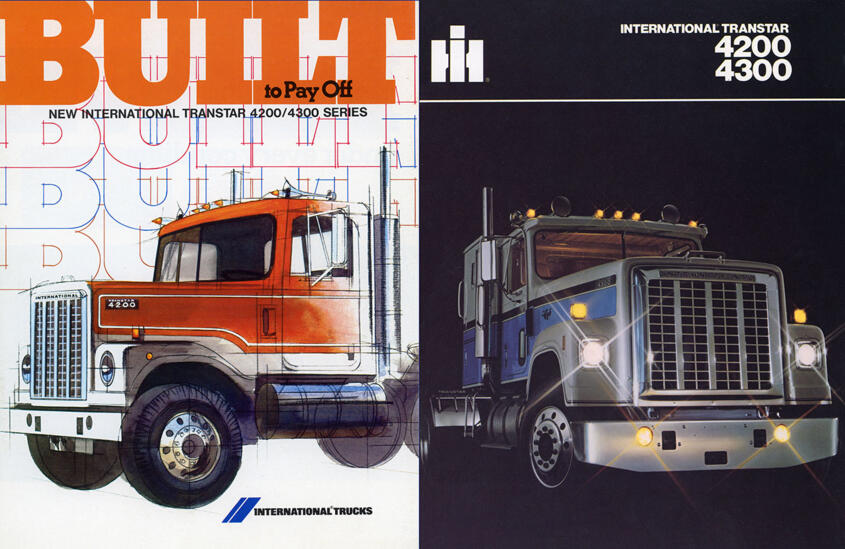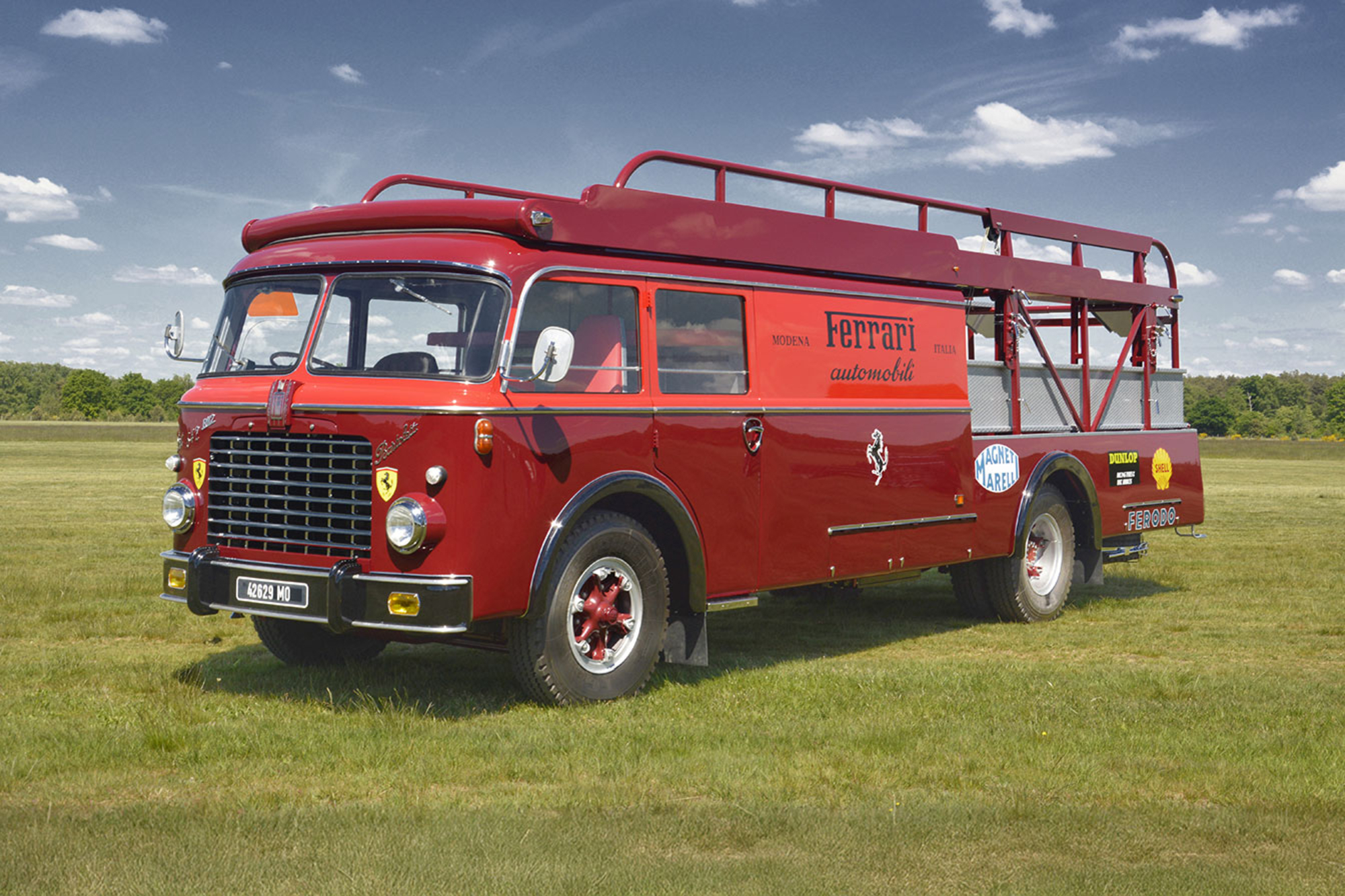International Transtar 4300 from 1971
Long-traveled, newly painted and highly adored
Nowhere in Europe are there as many truck fans as in the Netherlands. In this relatively small country, not only is cheese held in high esteem, but trucks are also very popular with the Dutch. Hardly any commercial vehicle operator would miss the opportunity to have their vehicles painted in elaborate multi-colored designs, and hardly any freight forwarder is not proud of the individual design of their trucks. The Spaansen company from Winkel in North Holland is not only no exception, but a shining example of the Dutch truck mentality. This report by Steve St.Schmidt is about Ton Spaansen and his latest acquisition, an International Transtar 4300 Conventional, built in 1971.
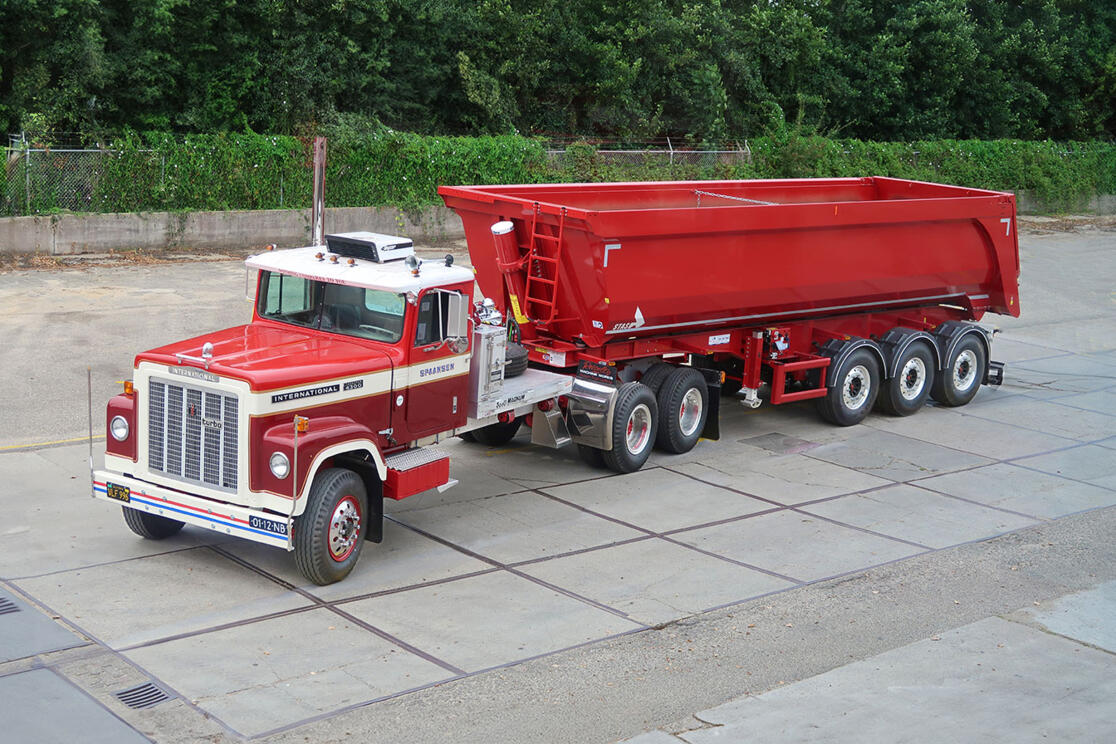
The brothers Arie and Ton Spaansen are not only known in the Netherlands for their collections of vintage trucks and their private commercial vehicle museums. Both have now retired, but their activities continue unabated, while their sons continue to run the Spaansen company empire. Arie has been focusing on the German brand Henschel for many years and has one of the largest collections of trucks from this brand in his museum. Ton has devoted himself to other manufacturers. In addition to a few FTF trucks that remind him of his youth as a truck driver, he is particularly fond of the American brand International, not only because his father founded the company in 1946 with an International KB-6. Ton displays a lavishly restored truck of this series in his museum, along with an early cab-over-engine model of the same brand. It has a special feature that all vehicles in the Spaansen fleet have: the English-language texts above the radiator grille. It all started back in 1973, when Ton Spaansen had his then new FTF labeled with the slogan “King of the Road”, after a song by Roger Miller from 1965.
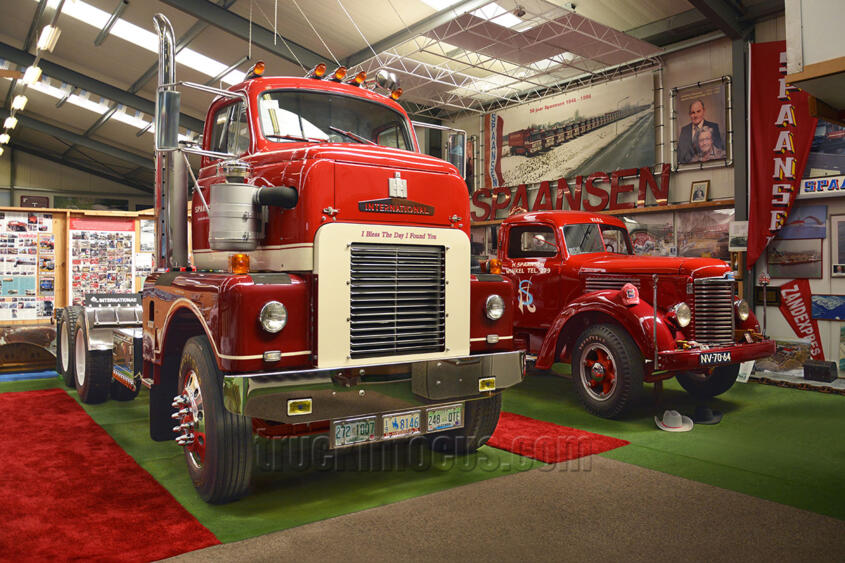
In 2019, Ton and his wife Ans visited the “Kirkham International Motor Truck Collection” in Lethbridge, Alberta, Canada. There, George Kirkham, the head of Southland International Trucks, had already started restoring old Internationals in the 1980s and now has more than 60 exhibits in his museum. More info: https://oldinternationaltrucks.com/kirkham-collection
As soon as he entered the museum, Ton noticed a particularly beautiful truck - a Transtar 4300 from the 1970s. The large conventional truck immediately stuck in his mind.
Four years later, in November 2023, Ton Spaansen discovered a similar truck on Facebook – a 1971 Transtar 4300, as a tractor unit. The vehicle was offered for sale by Reiselt's Machine Works in Ohio. The truck had been restored in 2020, with only the engine left in its original condition. Ton requested a braked front axle, as not all US trucks are equipped with one. After agreeing on a price with the previous owner, he had the truck and the axle delivered to the port of Baltimore in the US state of Maryland.
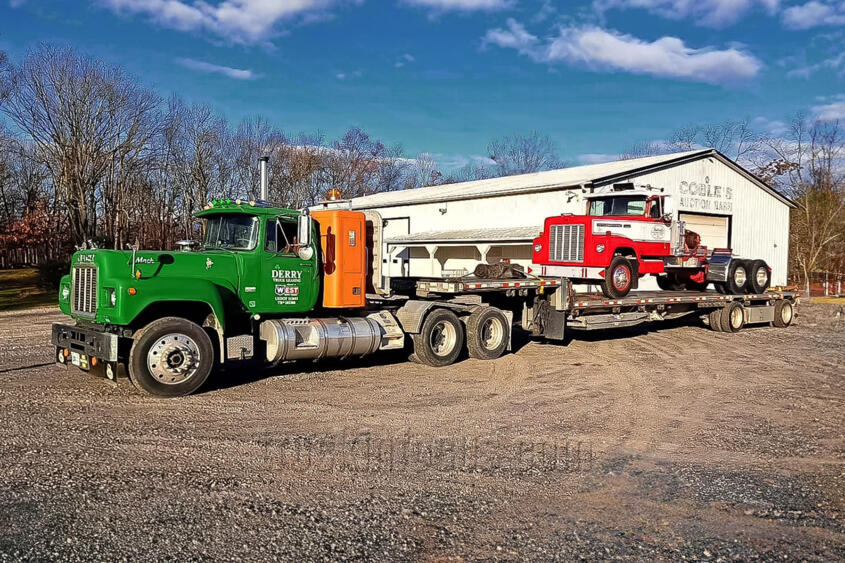
On December 2, 2023, the ship with Ton's truck left the port of Baltimore. The Ro-Ro container ship was just able to pass the harbor exit, which was spanned by a four-lane highway bridge more than 2.5 kilometers long. A little over a week later, the mighty bridge collapsed after a cargo ship rammed one of the pillars. The collapse claimed six lives and rendered one of the most important seaports in the United States unusable for a long time.
But back to the actual topic. On December 28, the ship with the tractor arrived in Antwerp via Halifax, Liverpool and Hamburg. There, Sander Hoogervorst, one of Spaansen's drivers, loaded the truck onto his low-loader and took it to Winkel, Spaansen's home town, that same day.
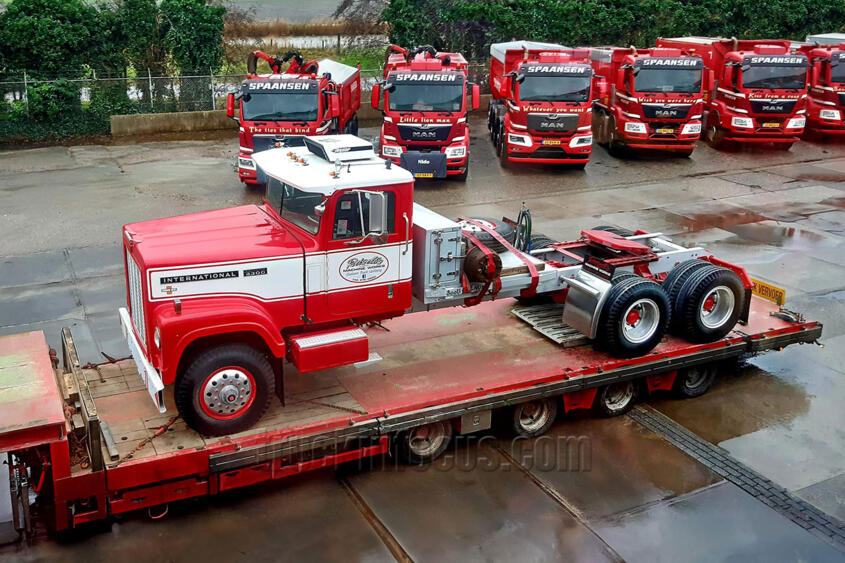
A short drive with colleague Klaas Poutsma followed, to hear the turbo whine of the 335-horsepower Cummins diesel and to make a few clean gear changes with the Fuller Road Ranger 13-speed transmission.
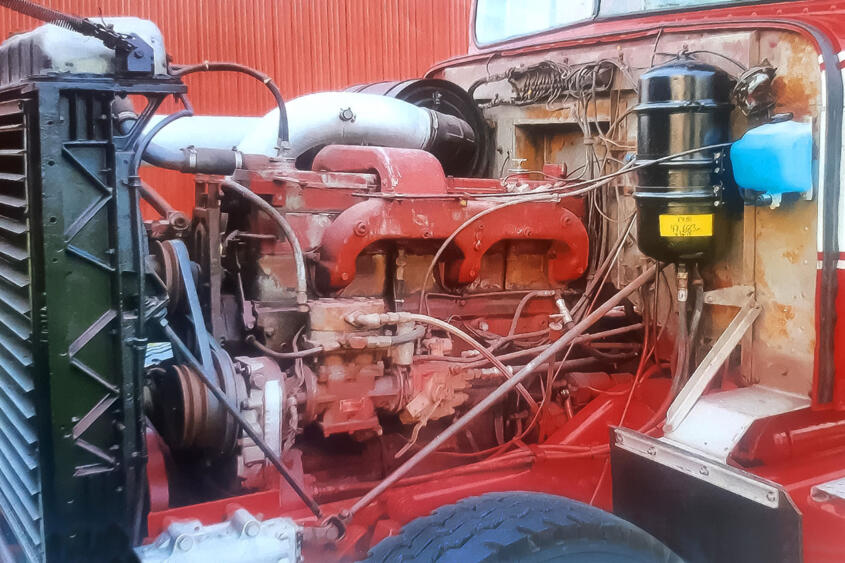
Right at the beginning of the new year, Ton and Klaas started to remove all the parts from the 335 hp Cummins engine in order to restore and paint it. Pipes and hoses were replaced or newly made, and when the old diesel was spruced up again, it looked almost new.
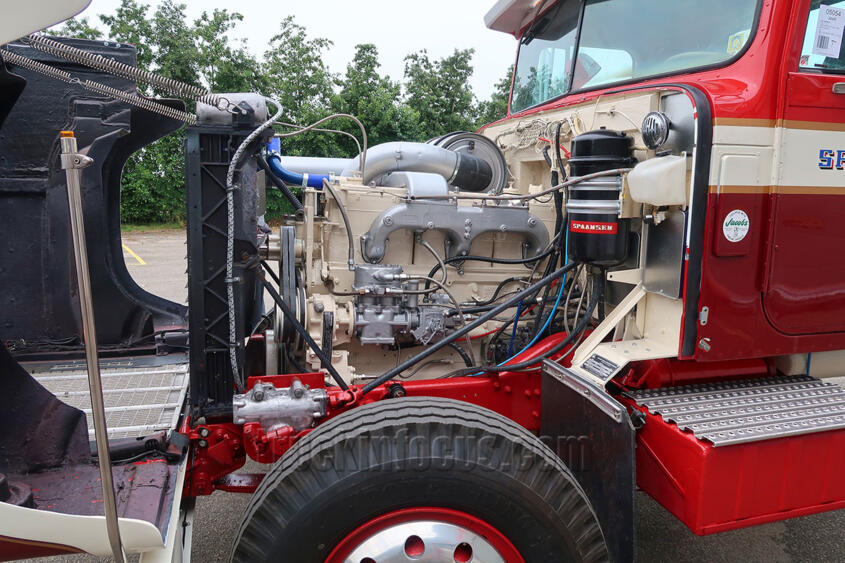
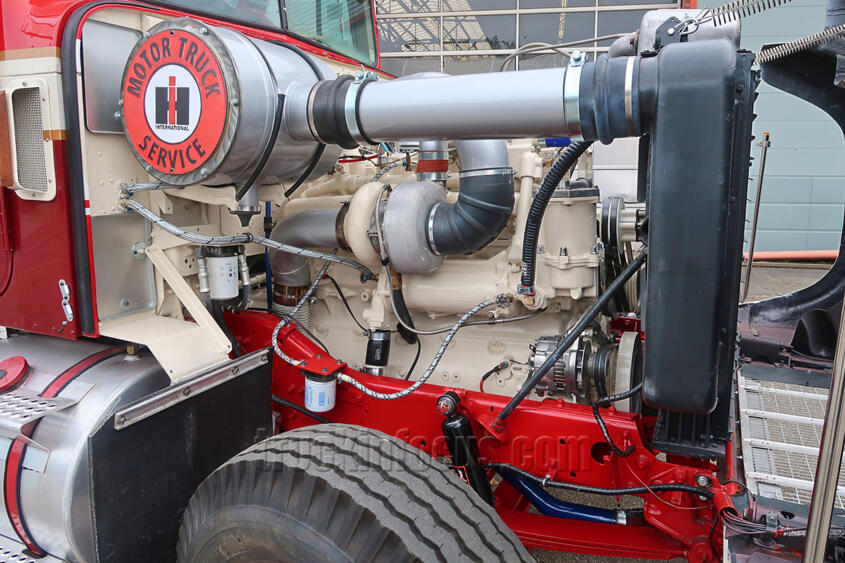
After some consideration, Ton decided to repaint the entire vehicle in the colors typical of Spaansen trucks. Two different shades of red with cream-colored accents and the Spaansen logo in blue gave the 53-year-old International the desired appearance. Finally, gold stripes were applied over the edges of the paint, because that's how International trucks left the factories in America. It is admirable how the company High Lights from Winkel, which also paints all Spaansen vehicles, took care of this special collector's item. More info: https://www.highlightsreklame.nl/
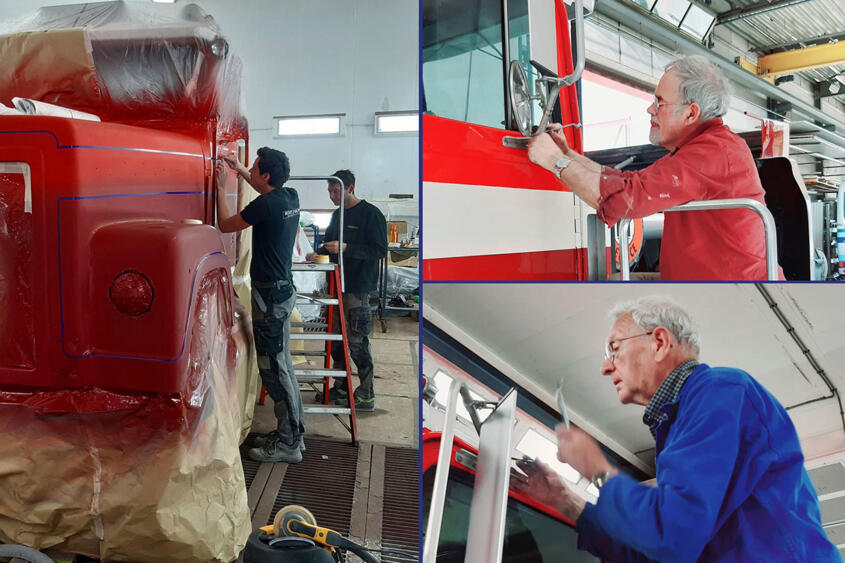
Now it was time for some new parts such as shock absorbers and brake boosters. New exterior mirrors and a flawless radiator grille were also installed. The new rear fenders came from Dave de Wit of Jan de Wit in Callantsoog, a company that specializes in the import of American trucks and parts, as well as repairs and restorations. More info: https://www.chopperdokter.nl
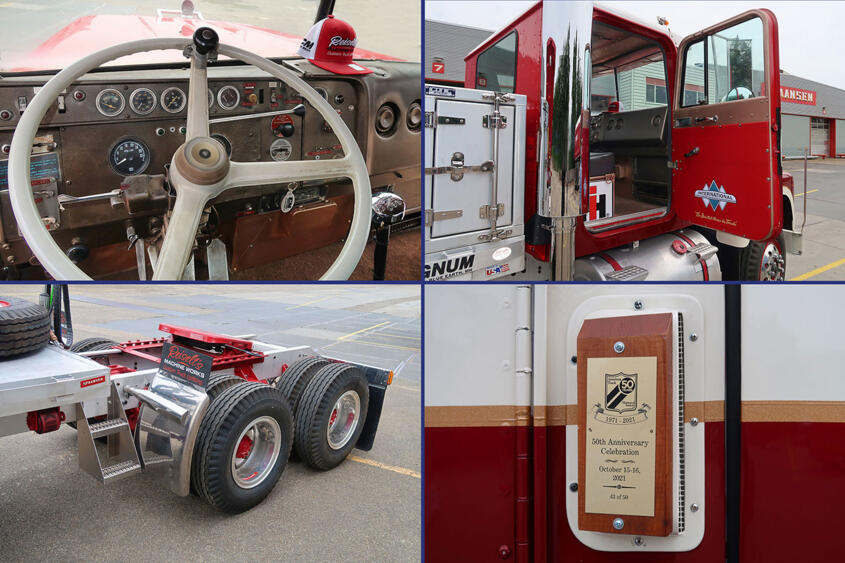
The interior of the cab was not only restored, but also fitted with high-quality decorative parts. One example of this is the door panels with integrated International emblems.
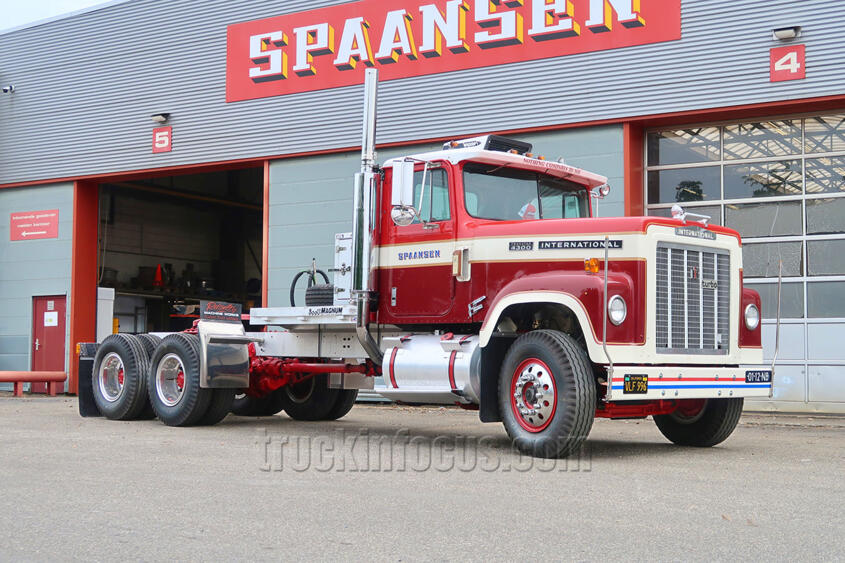
When Ton and Klaas had finished restoring the Transtar 4300 and everything was put back together, Sander Hoogervorst, chairman of the US Truck Collectors' Club, invited Ton to present his new pride and joy. The club members came to the barbecue with their Peterbilt, Kenworth and Western Star trucks and were amazed by the rare tractor unit. Despite the many US truck enthusiasts in the Netherlands, there are very few owners of International brand vehicles.
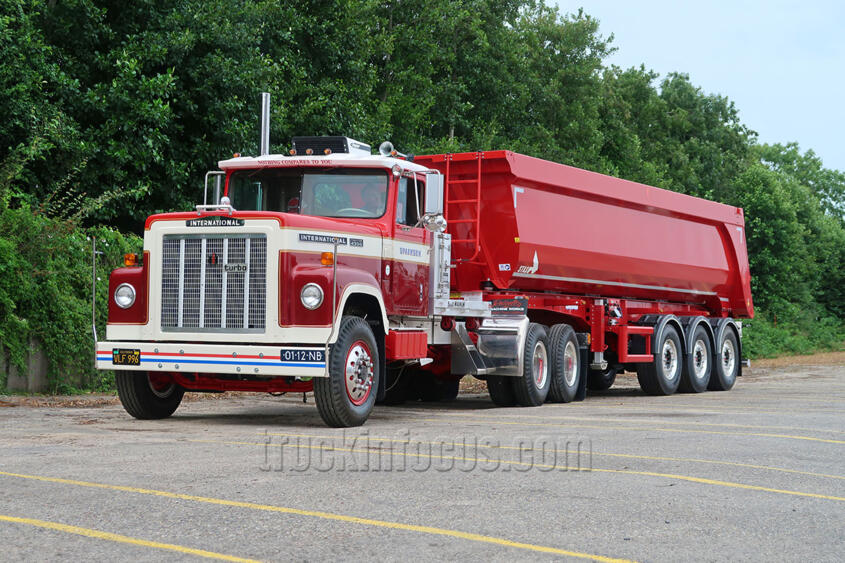
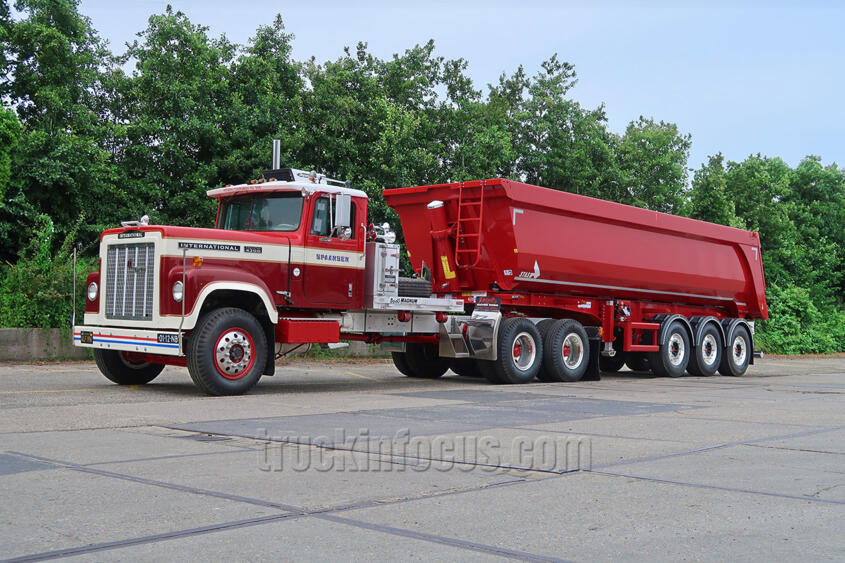
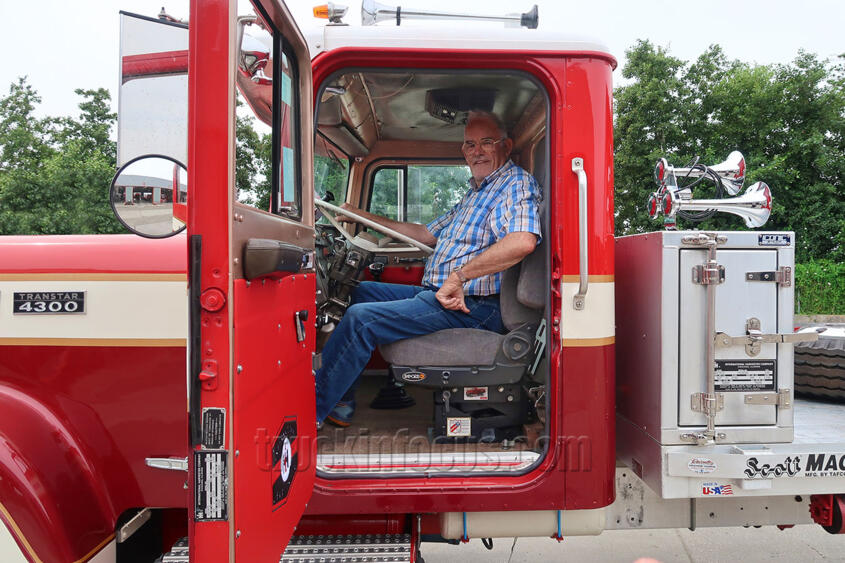
Nevertheless, the International Harvester Company (IHC) undoubtedly occupies an important place in the history of American commercial vehicles. The company was founded in 1902 in Chicago, Illinois, through the merger of several agricultural machinery manufacturers. The group soon began to build trucks as well. In the 1960s, International was the largest truck manufacturer in the United States, enthuses Ton. He explains that in 1966, a total of 182,000 trucks left the International Harvester Company's factories. At that time, the Springfield plant reached a peak production of 450 trucks per day. On average, 420 units were produced daily, which was mainly due to the introduction of the Loadstar model. In the following decades, however, things went downhill until all business areas were sold, with the exception of the commercial vehicle division, which was continued under the name Navistar International from 1986. Today, International is number 2 in the US Class 6/7 trucks and number 4 in Class 8.
